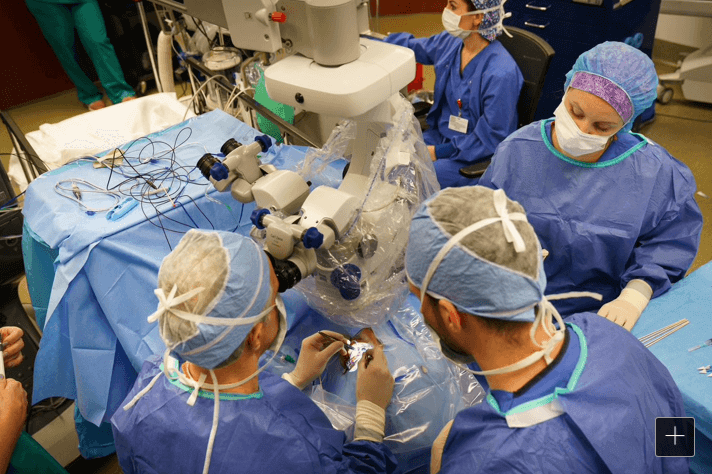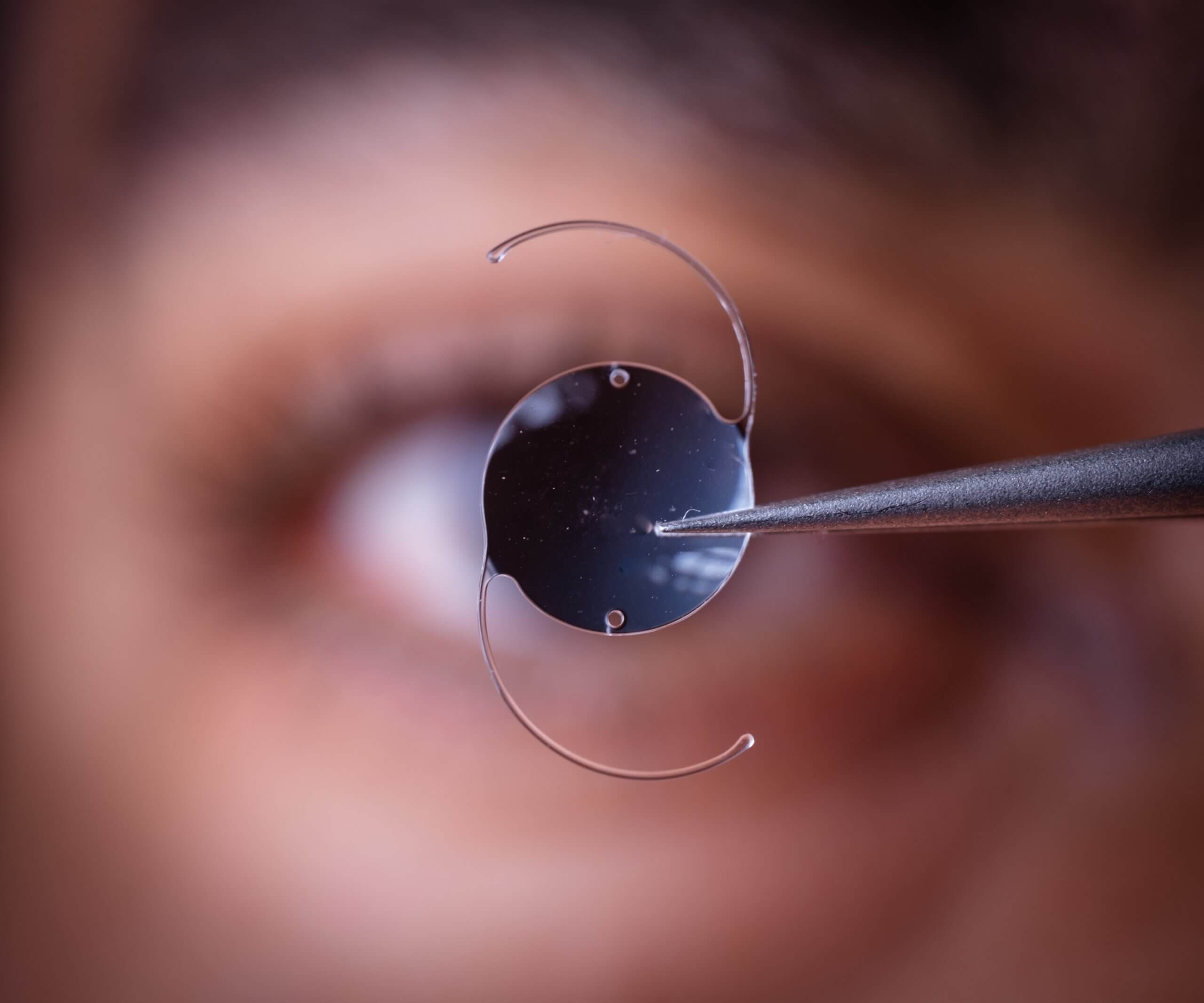There are two types of cataract surgery. Your doctor can explain the differences and help determine which is better for you.
Cataract surgery is most often done as an outpatient procedure with local anesthesia (a numbing gel is placed in the eye) and light intravenous sedation. Prior to cataract surgery, antibiotic eye drops may be prescribed to prevent infection. You should not see instruments coming toward your eye and you should not feel pain in your eye during surgery. The incision made to remove the cataract is so small that it usually does not require stitches. Phacoemulsification (a type of ultrasound) is the most common method used to remove the cataract.

After the natural lens has been removed, it often is replaced by an artificial lens, called an intraocular lens (IOL). An IOL is a clear, plastic lens that requires no care and becomes a permanent part of your eye. Light is focused clearly by the IOL onto the retina, improving your vision. You will not feel or see the new lens.
Some people cannot have an IOL. They may have another eye disease or have problems during surgery. For these patients, a soft contact lens, or glasses that provide high magnification, may be suggested.
In phacoemulsification, or phaco, a small incision is made on the side of the cornea, the clear, dome-shaped surface that covers the front of the eye. Your doctor inserts a tiny probe into the eye. This device emits ultrasound waves that soften and break up the lens so that it can be removed by suction. Most cataract surgery today is done by phacoemulsification, also called “small incision cataract surgery.”
In extracapsular surgery, your doctor makes a longer incision on the side of the cornea and removes the cloudy core of the lens in one piece. The rest of the lens is removed by suction.
All intraocular lenses are used to restore clarity of vision.There are many intraocular lens choices available to patients.
Standard lens implants are monofocal, meaning they are designed to correct the vision at one focal length. If a patient chooses to have IOLs implanted that correct for distance vision in both eyes, they will most likely need glasses to read. Some patients opt for an IOL that corrects their vision for distance in one eye and an IOL that corrects their vision for near in the other eye.
Premium IOLs include the presbyopia-correcting IOLs and the toric IOLs. The decision to use these lenses must be made on an individual basis.

Presbyopia-correcting intraocular lenses are designed to correct for distance and near vision. The intended goal of these lenses is to decrease the need for glasses.
Toric intraocular lenses are used for those patients with astigmatism. Astigmatism refers to an irregularity in the curvature of the cornea. Toric IOLs are designed to correct distance vision and astigmatism.
The Femtosecond laser is another option available for your doctor to use during cataract surgery. It is an FDA approved, computer-guided laser that is programmed by the surgeon. This device can aid the surgeon in the performance of some of the steps involved in the removal of a cataract. It can also be used in procedures performed to correct astigmatism.
